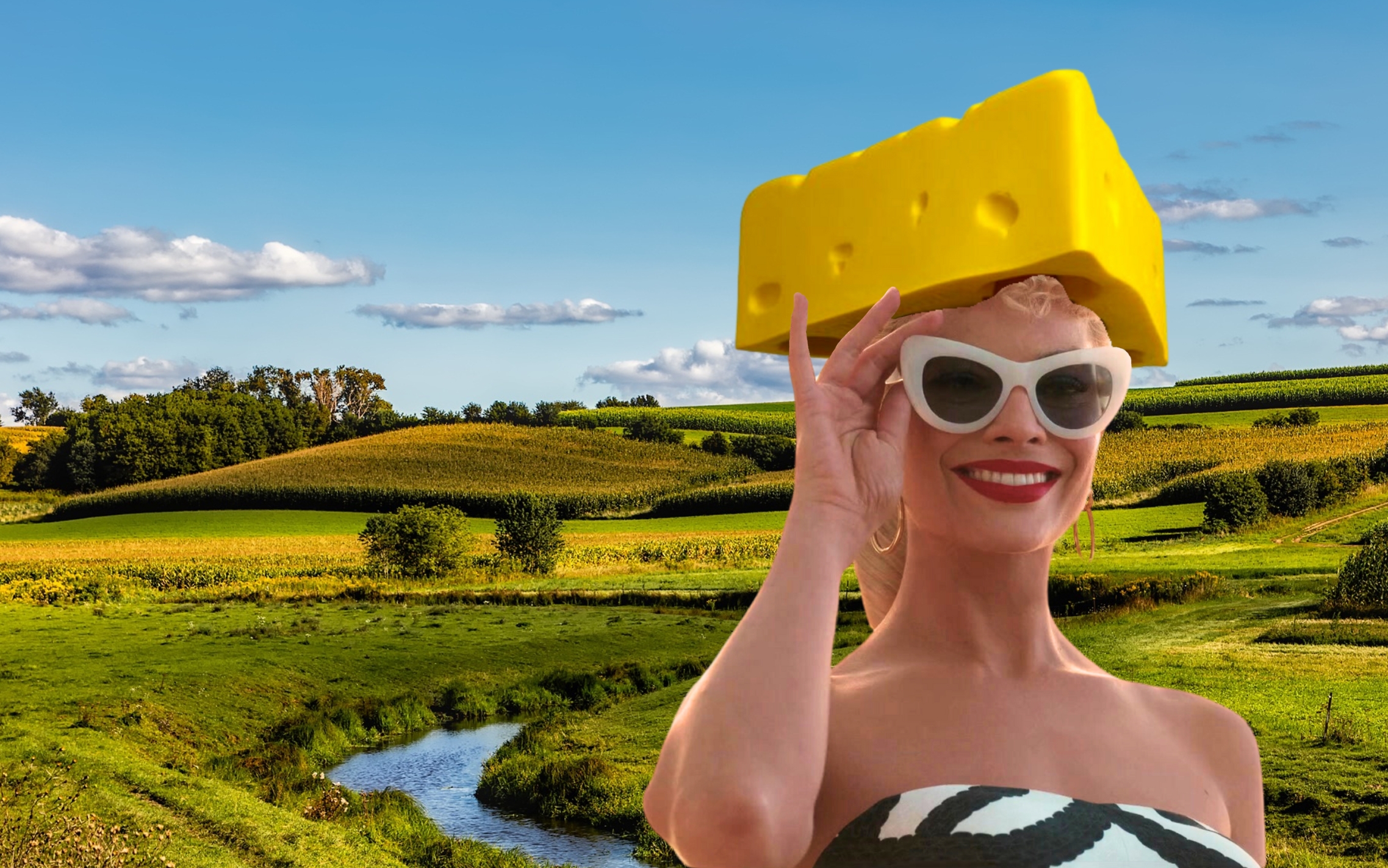If you saw a movie in theaters this summer, it’s more likely than not that you saw Barbie.
The 2023 Greta Gerwig film shattered several box office records, including highest-grossing film by a solo female director. It had a truly unprecedented impact on theater attendance by women across the country during its theatrical run, reflected by its win of the inaugural Golden Globe for Cinematic and Box Office Achievement.
While the film itself was undoubtedly a great time, the cultural moment surrounding this summer’s “Barbiemania” had everything to do with Barbie’s place in the homes and hearts of millions of American families over the past fifty years.
But did you know that Barbie herself has Midwestern roots, dating back to her earliest origins in the 1950s?
Barbie in the Badger State
Yes, you heard that right—the one and only Barbie is canonically a native Wisconsinite!
According to the original Barbie lore, both Barbie and Ken are from the fictional town of Willows, Wisconsin.
Although this was later retconned in the 2010s to state that Barbie moved from Willows to Malibu at age 8, where she later met Ken, her origins as a Wisconsinite are so important to her all-American image and cultural significance.
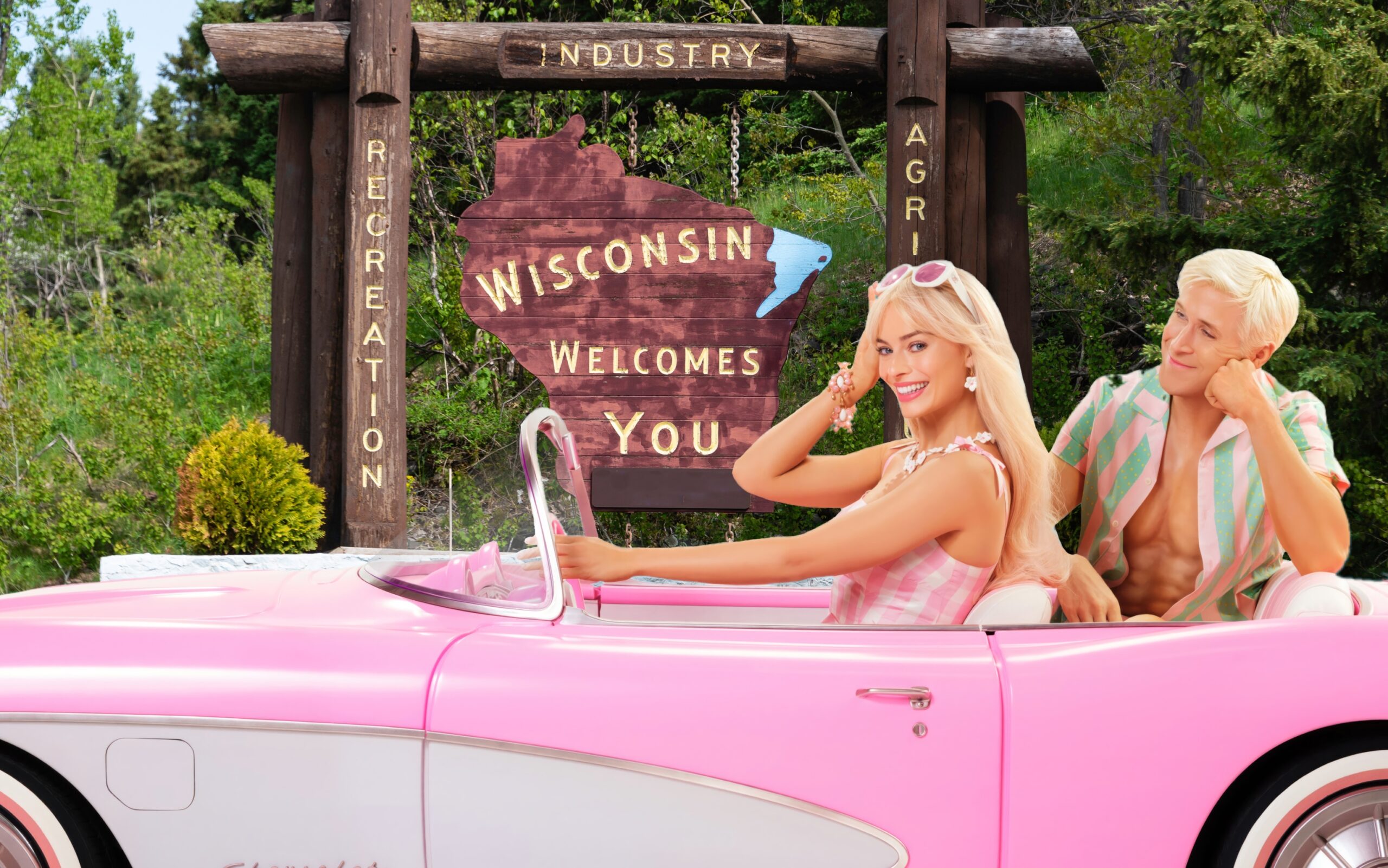
“Barbie’s creator, Ruth Handler, wanted to create a doll that let girls see themselves as adults and imagine the possibilities for their future,” says Abbie Norderhaug, State Archivist and Director of Acquisitions for the Wisconsin Historical Society. “I believe, that to allow girls to see themselves and their future in Barbie it was important to give Barbie a relatable origin and backstory.”
The Wisconsin Historical Society maintains a curated collection of Barbie dolls spanning decades, with a somewhat unique focus: rather than trying to collect dolls in pristine condition like the average collector, the Society’s collection focuses on well-loved toys that tell the stories of Wisconsin families over the years.
“If you look at our 1961 Barbie, for example, you can see that Beth Fox, the doll’s original owner gave the doll a French braid, changing the original ponytail style,” says Norderhaug. “Collecting items that have been used, rather than boxed toys gives insight into how these items were thought of and used in their owners’ daily lives.”
The town of Willows, and Wisconsin as a whole, are referenced at various points in Barbie’s history spanning decades—not only in TV shows and movies, but also in several dolls themselves.
One of Norderhaug’s favorite dolls in the Wisconsin Historical Society collection is the University of Wisconsin cheerleader doll, from the ‘90s “University Barbie” collection.
“[It’s] the most interesting to me, mainly because it connects back to Barbie’s Wisconsin roots,” she says. “It also seems to me like it’s a story that would feel relatable to lots of people who played with Barbies as children who may have grown up in small communities and attend a large state school for college.”
The Willows, WI Collection line of dolls featured Homecoming Queen, Soda Shop, and Cherry Pie Picnic dolls inspired not only by the fictional Midwestern town, but by things ubiquitous in American culture as a whole.
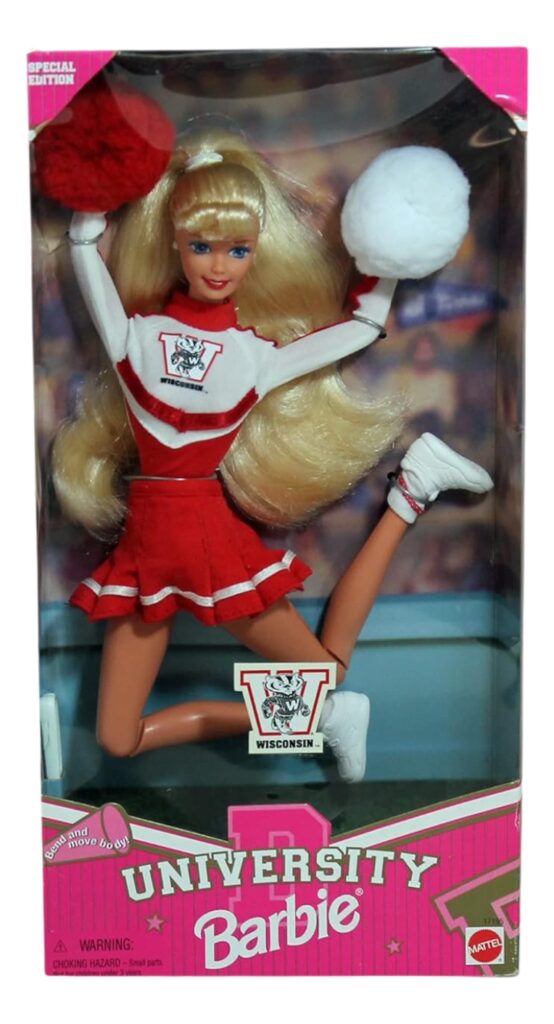
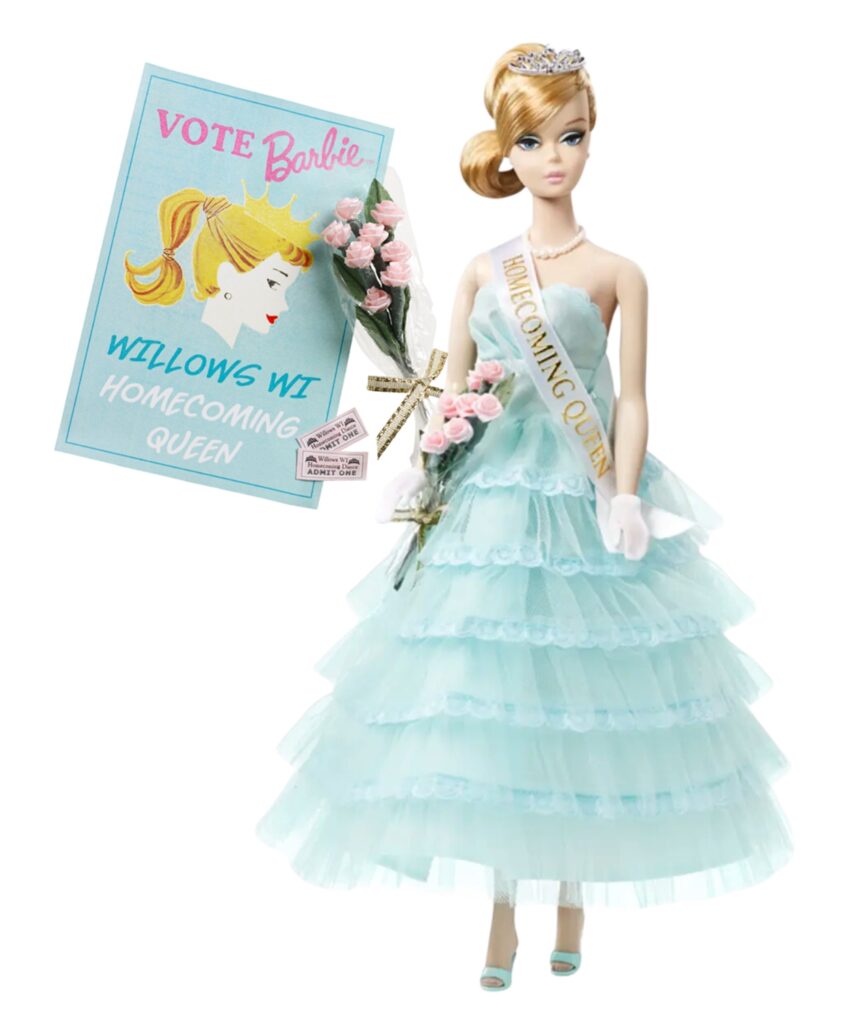

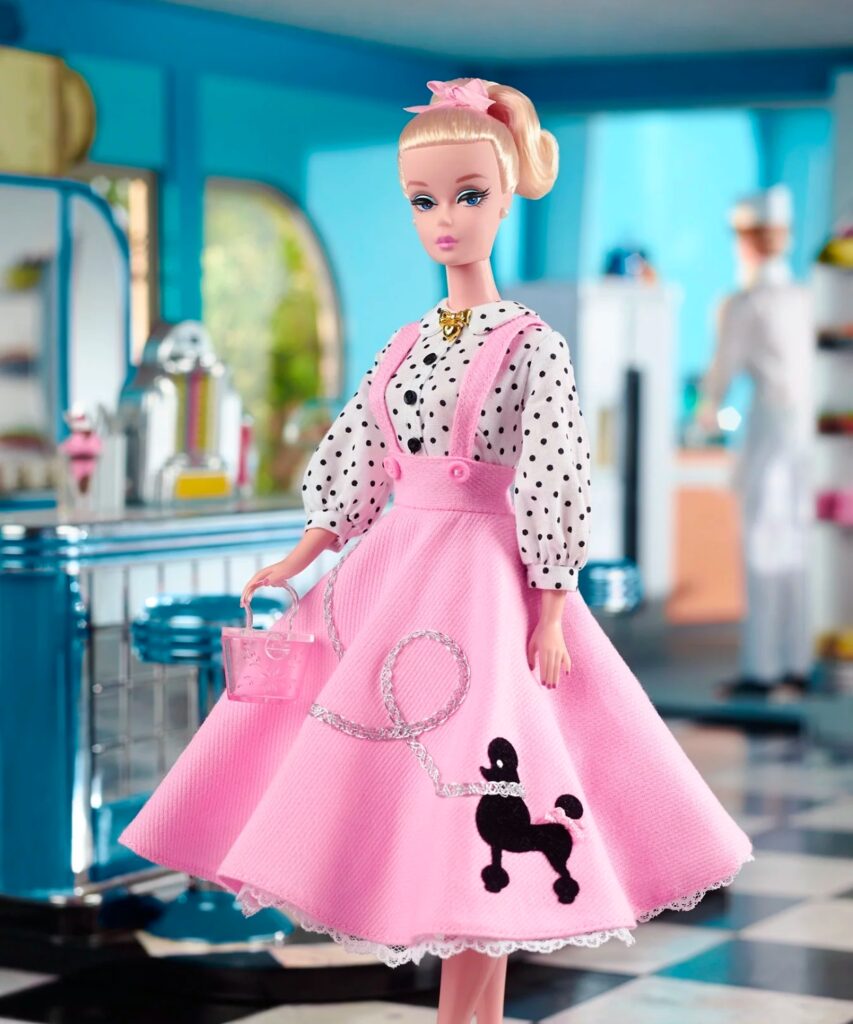
ABBIE NORDERHAUG, WISCONSIN HISTORICAL SOCIETY“Coming from a small Midwestern town makes Barbie relatable to so many people. It reinforces Ruth Handler’s wish to let girls see themselves as anything; if a girl from a small Wisconsin town can go on to become an astronaut, anyone can.”
Barbiemania and Midwestern Barbie Pride
While the 2023 “Barbiemania” started as hype around the record-setting film, it quickly became so much more than that.
Not only could you reliably see Barbie at even the smallest of theaters across the country and region, but the Midwest had no shortage of incredible ways to engage even more beyond the film.
In Wisconsin itself, you could (and can still!) stay in a one-of-a-kind real life Barbie Dreamhouse. The “Barbiecore Castle” is one of Brooke Fleetwood’s several “Pink Castle” rentals in downtown Hudson, WI, complete with pink walls, plenty of glitz and glam, and of course, lots of Barbie decorations.
In Minneapolis and Chicago, you could step right into Barbie’s world at the Malibu Barbie Café pop-ups, where Barbies and Kens alike could roller skate the day away and indulge in treats like a colorful and fresh cauliflower bowl or a perfectly pink beet hummus.

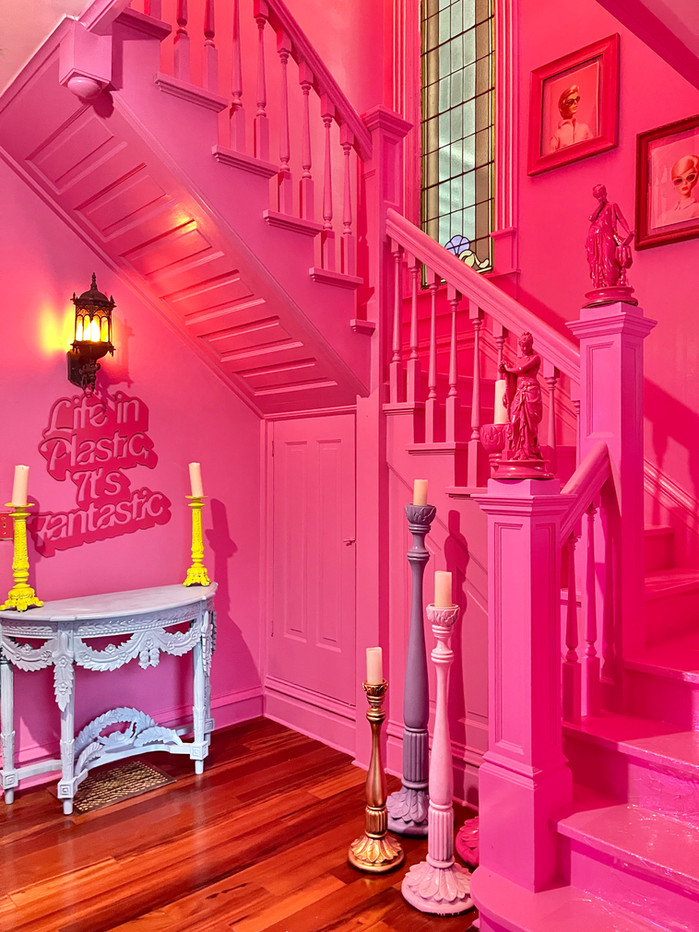
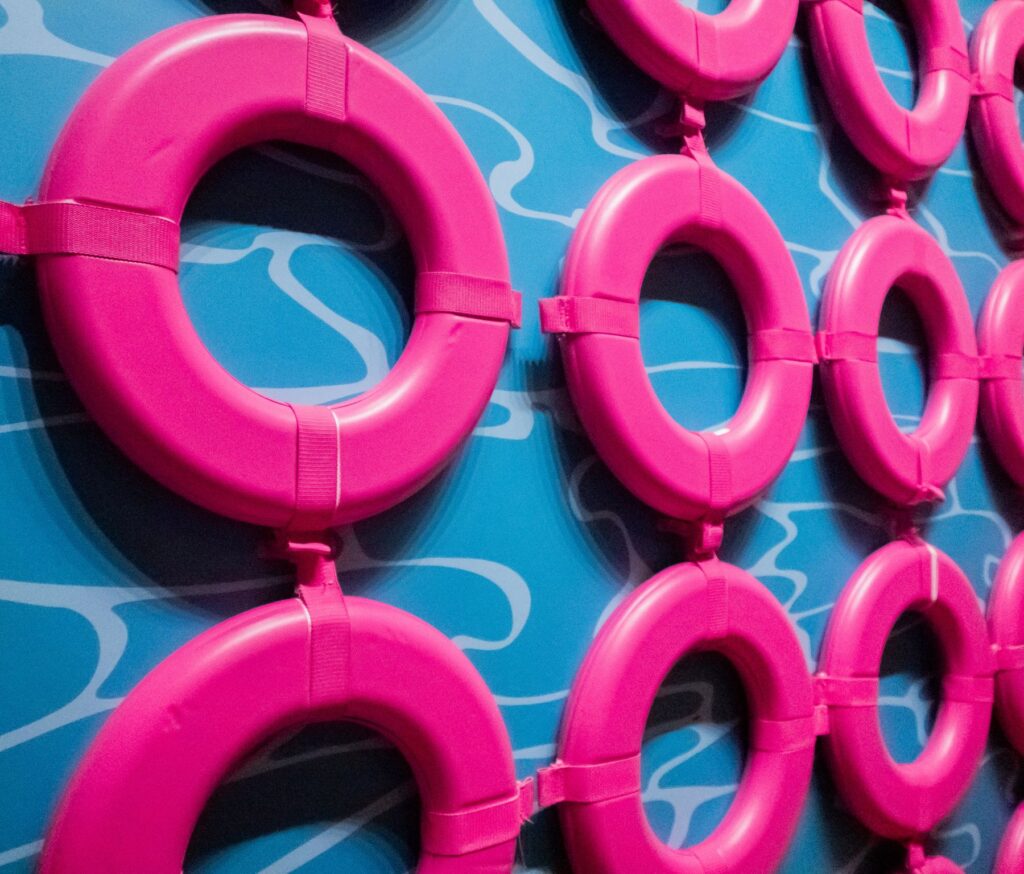

Something really unique about 2023’s Barbie cultural phenomenon was its universal accessibility. It was something special and communal that audiences of women across the country could participate in. It wasn’t about just going to see a movie, it was about celebrating community and joy and girlhood with the women in your life.
And perhaps most importantly, it was about a Midwesterner teaching a new generation of girls that you can be anything you want.
“Barbie has held over 200 careers, from her first as a teen fashion model to service in the armed forces to rock star to presidential candidate,” says Abbie Norderhaug. “I think she has shown children over the years that it’s important to dream big about their futures and that there are lots of possibilities open to them.”
